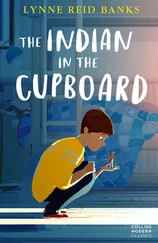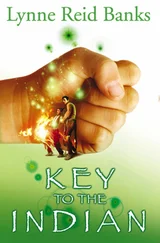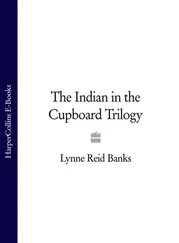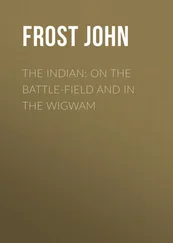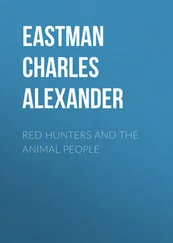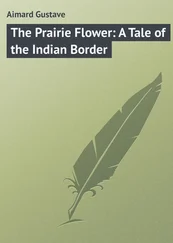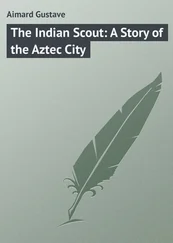Charles Eastman - The Indian To-day
Здесь есть возможность читать онлайн «Charles Eastman - The Indian To-day» — ознакомительный отрывок электронной книги совершенно бесплатно, а после прочтения отрывка купить полную версию. В некоторых случаях можно слушать аудио, скачать через торрент в формате fb2 и присутствует краткое содержание. Жанр: foreign_antique, foreign_prose, на английском языке. Описание произведения, (предисловие) а так же отзывы посетителей доступны на портале библиотеки ЛибКат.
- Название:The Indian To-day
- Автор:
- Жанр:
- Год:неизвестен
- ISBN:нет данных
- Рейтинг книги:3 / 5. Голосов: 1
-
Избранное:Добавить в избранное
- Отзывы:
-
Ваша оценка:
- 60
- 1
- 2
- 3
- 4
- 5
The Indian To-day: краткое содержание, описание и аннотация
Предлагаем к чтению аннотацию, описание, краткое содержание или предисловие (зависит от того, что написал сам автор книги «The Indian To-day»). Если вы не нашли необходимую информацию о книге — напишите в комментариях, мы постараемся отыскать её.
The Indian To-day — читать онлайн ознакомительный отрывок
Ниже представлен текст книги, разбитый по страницам. Система сохранения места последней прочитанной страницы, позволяет с удобством читать онлайн бесплатно книгу «The Indian To-day», без необходимости каждый раз заново искать на чём Вы остановились. Поставьте закладку, и сможете в любой момент перейти на страницу, на которой закончили чтение.
Интервал:
Закладка:
It is important to understand the underlying causes of Indian wars. There are people to-day who believe that the Indian likes nothing better than going on the warpath, killing and scalping from sheer native cruelty and lust for blood. His character as a man of peace has not been appreciated. Yet it is matter of history that the newcomers were welcomed in almost every case with unsuspecting kindness, and in his dealings with the white man the original owner of the soil has been uniformly patient and reasonable, offering resistance only under irresistible provocation.
There have been but few noteworthy Indian wars in the history of America. In 1629 Powhatan's brother revolted against the colonists in Virginia, and King Philip took up arms in Massachusetts in 1675. The Cherokee war of 1758 in North and South Carolina came next; then the conspiracy of Pontiac in 1763, the Creek war from 1812 to 1830, and the Seminole war from 1820 to 1833. These wars in the South were incited by the insolence and aggressiveness of the Americans. The struggles of the Algonquins and the Iroquois, however, were not conducted wholly on their own initiative. These tribes were used as allies in the long-drawn-out conflicts between the French and the English, and thus initiated into the motives and the methods of the white man's warfare.
I doubt very much if Pontiac would have carried his policies so far had it not been for the encouragement he received from French traders and settlers, who assured him that King Louis would come to his assistance in due time, with men and ammunition. Strong in this belief, as well as in his innate sense of right and justice, he planned to unite the scattered tribes against the invader and overthrow all the border forts in a day. His boldness and aggressiveness were unique in the history of Indian warfare.
At this juncture a remarkable man was chosen to guide the Indian policy in America. Sir William Johnson had long been engaged in trade among the Six Nations, and more especially the Mohawks. His influence among them was very great; and it was partly through his conciliatory methods, and partly by reason of the betrayal of his plans and the failure of the French to keep their promises of assistance, that Pontiac, perhaps our greatest military genius, was forced to surrender.
A sad feature of the early wars was the sufferings of those Indians who had listened to the preaching of Jesus Christ. In Massachusetts, during King Philip's war, the Christian Indians were treated no better than the "heathen savages." Some were hanged, some imprisoned, and some sold as slaves to the West Indies. At best, they lost their homes and improvements, and nearly perished of cold and hunger. In Pennsylvania, at Conestoga and Wyoming Valley, they were horribly murdered, and the peaceful Moravian Indians were butchered at prayer in their church, while no one dared say a word of protest except the Quakers.
To return to the wars in the South, many of these were mere feuds between one or two families. The Cherokees secured concessions and promises of better treatment from the white men, after which they continued friendly, and helped in overcoming the Creeks and Seminoles.
Practically all Indian wars have been caused by a few self-seeking men. For instance, a man may secure through political influence a license to trade among the Indians. By his unprincipled practices, often in defiance of treaty agreements, such as gross overcharging and the use of liquor to debauch the natives, he accumulates much tainted wealth. This he invests in lands on the border or even within the Indian territory if ill-defined. Having established himself, he buys much stock, or perhaps sets up a mill on Indian water-power. He gathers his family and hirelings about him, and presently becomes a man of influence in his home state. From the vantage point of a rough border town, peopled largely with gamblers, saloonkeepers, and horse-thieves, this man and his kind plot the removal of the Indian from his fertile acres. They harass him in every way, and having at last forced resistance upon him, they loudly cry: "Indian outbreak! Send us troops! Annihilate the savages!"
The principal causes of Indian troubles in the South were, first, the encroachments of this class of settlers; second, the hospitable willingness of the Indians to shelter fugitive slaves. Many of these people had found an Elysium among the Creeks and Seminoles, and had even intermarried among them, their offspring becoming members of the tribe. Osceola's wife was of this class – a beautiful Indian woman with some negro and some white blood. She was dragged away from him by unholy traffickers in human flesh, and he was arrested for remonstrating. Who could tolerate such an outrage? The great chief was then a young man and comparatively unknown; but within one year he became the recognized leader of his tribe and the champion of their cause. The country was perfectly suited to the guerilla warfare which is characteristic of Indians – a country in which even an Indian of another tribe would be lost! White frontiersmen were imported to guide the army, but according to the testimony of Beckworth, the Rocky Mountain hunter and trapper, all gave up in disgust. The Government was forced to resort to pacific measures in order to get the Seminoles in its power, and eventually most of them were removed to the Indian Territory. There was one small band which persistently refused the offered terms, and still remains in the fastnesses of the Florida Everglades, perhaps the only unconquered band in the United States to-day.
While the Southern tribes were deported almost in a body to what was then the far West, the wars of the Algonquins, along the Great Lakes and the Ohio River, scattered them far and wide in fragments. Such of the Iroquois as had strong treaties with the Dutch colony secured permanent reservations in the State of New York which they still occupy, having been continuously under state control instead of that of the general government.
The Black Hawk war in 1836 was the end of the Algonquin resistance. Surely if there was ever just cause for resistance, Black Hawk had such a cause. His case was exactly similar to that of the famous Nez Perce, Chief Joseph, who illustrates his grievance very lucidly in the North American Review for April, 1879, in an interview with Bishop Hare of South Dakota.
"If I ever sold any land to the Government," says he, "it was done in this way: Suppose a man comes to me and says: 'Joseph, I want to buy your horse.' I say to him: 'I am satisfied with my horse. I do not wish to sell him at any price.' Then the man goes to my neighbor and says to him: 'I want to buy Joseph's horse, but he would not sell it to me.' My neighbor says: 'If you will buy my horse, I will throw in his horse!' The man buys my neighbor's horse, and then he comes and claims my horse and takes it away. I am under no obligation to my neighbor. He had nothing to do with my horse."
It was just such dealing as this which forced Black Hawk to fight with a handful of warriors for his inheritance. The Government simply made a treaty with the Sacs under Keokuk, and took the land of the Foxes at the same time. There were some chiefs who, after they had feasted well and drunk deep and signed away their country for nothing, talked of war, and urged Black Hawk to lead them. Then they sneaked away to play "good Indian," and left him to bear the brunt alone.
There were no more Indian wars for thirty years. The Southwest frontiers were now occupied by eastern tribes or their remnants, which had been transported beyond the Mississippi during the early thirties. Only fragments were left here and there, in New York, Pennsylvania, Ohio, Indiana, and the South. The great Siouan race occupied nearly all the upper valley of the Mississippi and Missouri rivers and their tributaries. North of them dwelt the Ojibways, an Algonquin tribe with an entirely different language. The Sioux nation proper originally occupied a vast territory, and in the middle of the nineteenth century they still held the southern half of Minnesota, a portion of Wisconsin and Iowa, all of the Dakotas, part of Montana, nearly half of Nebraska, and small portions of Colorado and Wyoming. Some of the bands were forest Indians, hunters and trappers and fishermen, while others roamed over the Great Plains and hunted the buffalo, elk, and antelope. Some divided the year between the forest and prairie life. These people had been at peace with the whites ever since the early French explorers and the Jesuit priests had entered their country. They had traded for many years with the Hudson Bay and American Fur companies, and no serious difficulty had arisen, nor was any obstruction offered to the progress of civilization.
Читать дальшеИнтервал:
Закладка:
Похожие книги на «The Indian To-day»
Представляем Вашему вниманию похожие книги на «The Indian To-day» списком для выбора. Мы отобрали схожую по названию и смыслу литературу в надежде предоставить читателям больше вариантов отыскать новые, интересные, ещё непрочитанные произведения.
Обсуждение, отзывы о книге «The Indian To-day» и просто собственные мнения читателей. Оставьте ваши комментарии, напишите, что Вы думаете о произведении, его смысле или главных героях. Укажите что конкретно понравилось, а что нет, и почему Вы так считаете.
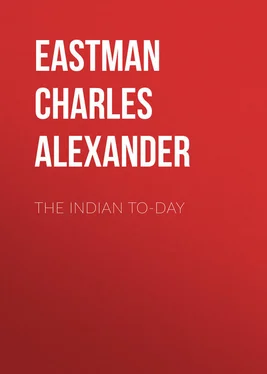
![О Генри - Бабье лето Джонсона Сухого Лога [The Indian Summer of Dry Valley, Johnson]](/books/407344/o-genri-babe-leto-dzhonsona-suhogo-loga-the-india-thumb.webp)


